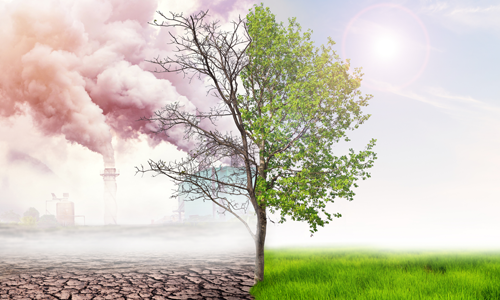Introduction: Global warming is a pressing environmental issue that has garnered widespread attention in recent decades. The Earth’s climate is experiencing significant changes, primarily attributed to human activities that release greenhouse gases into the atmosphere. This article aims to explore the causes, impacts, and potential solutions to address the global warming crisis.
Causes of Global Warming
Greenhouse Gas Emissions: The primary driver of global warming is the increased concentration of greenhouse gases, such as carbon dioxide (CO2), methane (CH4), and nitrous oxide (N2O), in the atmosphere. These gases trap heat from the sun, leading to a gradual rise in the Earth’s temperature.
Burning of Fossil Fuels: The combustion of fossil fuels for energy production is a major contributor to greenhouse gas emissions. Coal, oil, and natural gas release large amounts of CO2 when burned, intensifying the greenhouse effect.
Deforestation: Trees play a crucial role in absorbing CO2 from the atmosphere. Deforestation, driven by agriculture, logging, and urbanization, reduces the number of trees available to absorb these gases, exacerbating the greenhouse effect.
Impacts of Global Warming
Rising Temperatures: Average global temperatures are on the rise, leading to more frequent and intense heatwaves. This has far-reaching consequences for ecosystems, agriculture, and human health.
Melting Ice Caps and Glaciers: Warming temperatures contribute to the melting of polar ice caps and glaciers, causing sea levels to rise. This poses a threat to low-lying coastal areas and island nations.
Extreme Weather Events: Global warming is linked to an increase in the frequency and severity of extreme weather events, including hurricanes, droughts, floods, and wildfires.
Ocean Acidification: The absorption of excess CO2 by the oceans leads to acidification, harming marine life such as coral reefs and shellfish.
Solutions to Global Warming
Transition to Renewable Energy: Shifting from fossil fuels to renewable energy sources, such as solar, wind, and hydropower, is crucial in reducing greenhouse gas emissions.
Afforestation and Reforestation: Planting trees and restoring forests helps absorb CO2 from the atmosphere, mitigating the effects of deforestation.
Energy Efficiency: Improving energy efficiency in industries, transportation, and buildings reduces overall energy consumption and lowers greenhouse gas emissions.
International Cooperation: Global warming is a transboundary issue that requires international collaboration. Agreements and initiatives, such as the Paris Agreement, aim to unite countries in their efforts to combat climate change.
Conclusion: Addressing global warming is an urgent global priority. By understanding its causes, acknowledging its impacts, and adopting sustainable solutions, we can work towards a more resilient and sustainable future. Individuals, communities, businesses, and governments all play crucial roles in mitigating the effects of global warming and ensuring a healthier planet for future generations.

